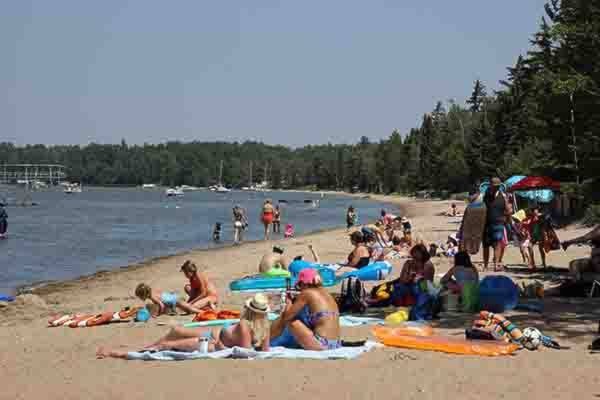The County of Wetaskiwin gave by-law 2015/36 a third and final reading on July 7 for the purpose of restricting the use of cosmetic lawn fertilizer within 100 meters from the shores of Battle Lake, Buck Lake, Coal Lake, Pigeon Lake, Red Deer Lake and Wizard Lake.
Reducing the amount of nutrients that wash into the lakes will eventually reduce the frequency and intensity of blue-green algae blooms. Studies have shown there is no quick fix and it may take a long time and commitment by the communities surrounding the lakes to effectively change the nutrient concentrations in the water body. Over the years, large amounts of nutrients have accumulated in the sediment at the bottom of the lakes that will continue to serve as food for the blue-green algae.
The by-law will be enforced and if caught violating it, a nice looking lawn could cost you $10 for fertilizer and a $1,000 fine. Second offence is $2,000, third offence is $3,000 and the 4th and any subsequent breaches of the By-Law will cost the offender $5,000.
To help guide the process and decision for approving the by-law, residents living near lakes in both Leduc County and the County of Wetaskiwin No. 10 were asked to complete a brief questionnaire regarding watershed management. The survey results provided a snap shot of resident sentiments at the time. Those that responded expressed a general concern for lake health, and in interest in improving it. A variety of concerns were shared, some which stand out were: septic/sewage systems, blue green algae blooms, agricultural impacts, potential physical “fixes” to lake quality, enforcement of existing by-laws and legislation and the need for more education.
According to Kim Barkwell, Sustainable Agriculture program manager, “…the survey highlights the importance of continued and improved engagement with the agriculture community around our lakes and other water bodies. All human activities: recreational, industrial, agricultural, and linear disturbance (roads and pipelines), have impacts on water quality. Assisting farmers to minimize nutrient loading, by applying beneficial management practices, bodes well for their operation and the health of their watershed.”
The by-law is intended to help reduce the production of blue-green algae that is enriched with nutrients like phosphorus or nitrogen, the main components of commercial fertilizer.
The by-law does not apply to the application of cosmetic lawn fertilizer: (a) on lands used for the purpose of agriculture, (b) on lands used as a golf course or a golf driving range where that land use is in accordance with the zoning in the Land Use By-Law, (c) on lands used for horticultural production, such as greenhouse or market garden, (d) lands used as nursery stock for tree production or reforestation, or (e) lands used for turf grass or sod production.
Concerns were flagged at the January 24, 2012 County of Wetaskiwin meeting when Mr. Don Davidson a representative of the Association of Pigeon Lake Municipalities (APLM) expressed concerns regarding the preservation of Pigeon Lake. The blue-green algae is a re-occuring problem afflicting Pigeon Lake. APLM is striving to correct the situation by working closely with the municipalities. Mr. Davidson advised Council about issues such as water quality; by-laws are ineffective and not being enforced; nutrients are root cause of quality problems and only three Villages have fertilizer restrictions.
Heather Kipling, AHS Communications clarifies it further, “Please note that areas of Pigeon Lake in which the blue-green algae (cyanobacteria) bloom is not visible can still be used for recreational purposes, even while this blue-green algae (Cyanobacteria) advisory is in place.
If you think you are experiencing symptoms related to exposure to blue-green algae (e.g., stomach cramps, diarrhoea, vomiting, headache, fever, muscle weakness, difficulty breathing), contact your doctor or Health Link at 811 right away. Information is available at http://www.albertahealthservices.ca/10189.asp If your pet displays symptoms such as seizures, vomiting, or the runs after contact with surface water, contact your veterinarian right away.
